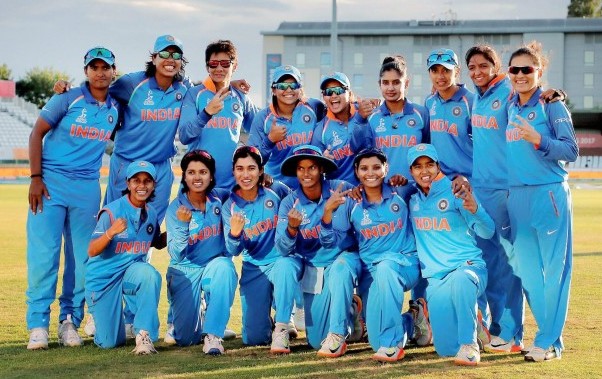Vidyasagar
 Recently, the Supreme Court has agreed to hear a plea which sought a direction to the Central government to amend the constitution to change the official name of the country from India to Bharat. This plea claimed that “the removal of the English name, though appears symbolic, will instill a sense of pride in our nationality, especially for the future generations. In fact, replacing India with Bharat would justify the hard-fought freedom achieved by our ancestors.” The petitioner demands that we have to recognize our country from our cultural legacy and this would be a great tribute to national fighters who fought for the freedom of this country. The politics of naming is not a new phenomenon because the ruling BJP led NDA government has only one agenda of imposing hegemony of Hindutva culture through the politics of renaming of cities, railway stations and welfare schemes. This article attempts to explain the politics of naming through two theoretical concepts which were propounded by Ernest Gellner and Anthony D Smith.
Recently, the Supreme Court has agreed to hear a plea which sought a direction to the Central government to amend the constitution to change the official name of the country from India to Bharat. This plea claimed that “the removal of the English name, though appears symbolic, will instill a sense of pride in our nationality, especially for the future generations. In fact, replacing India with Bharat would justify the hard-fought freedom achieved by our ancestors.” The petitioner demands that we have to recognize our country from our cultural legacy and this would be a great tribute to national fighters who fought for the freedom of this country. The politics of naming is not a new phenomenon because the ruling BJP led NDA government has only one agenda of imposing hegemony of Hindutva culture through the politics of renaming of cities, railway stations and welfare schemes. This article attempts to explain the politics of naming through two theoretical concepts which were propounded by Ernest Gellner and Anthony D Smith.
The politics of names is constituted by the various narratives of sociopolitical conditions of a nation. Historically speaking, the name “Bharat” was inherited through the cultural history of India. The shift from “Bharat” to “India” could be traced from the British colonial history of India. Eventually, “India” and “Bharat” became part of the debate, though the other name “Hindustan” was also part of the discussion in the constituent assembly of India. In the contemporary and popular debate, India and Bharat are related to two different segregated spaces. The connotation of India is much more reflected among the elite and middle-class masses. Village and urban spaces manifest economic angle of the debate Bharat and India respectively. Village life is seen as agrarian-based, self-reliant and is popularly called “little republics” in sociological pedagogy. India manifested in cities is less productive but highly consumerist. The culture of consumerism and capitalist marketing has resulted in the deep socio-economic inequalities among various classes thereby inevitably leading to the exploitation and oppression of the labouring class in the urban spaces. The massive migration of people from Bharat i.e., countryside, to India i.e., city for improving their life prospects has had both positive and negative impacts. Though, the rise of slums in the city and changing the essence of rural life, especially after the emergence of ICT, has played a crucial role in the making of India and Bharat.
In “National Identity”, Anthony Smith argues that nation and its self is composed of multiple identities and roles like territorial, class, ethnic and gender. Most obviously and fundamentally, territorial identity is more dominant in the making of a nation. Regions easily fragment into localities, and localities may easily disintegrate into separate settlements. In this context we can see India and Bharatas two disintegrated settlements in a single territory: India as a symbol of urbanization, modernity and developed locality and Bharat representing the ancient and Hindu culture based on rural society. Smith categorizes the two conceptions of national identity as western and non-western. In western conception, historic territory, legal-political community, legal-political equality of members, and common civic culture and ideology are the major components and non-western model stands for an ethnic conception of the national identity which emphasized the native culture and community of birth.
We can contextualize the debate of India and Bharat through the abovementioned two categories of national identity. To some extent, India is the symbol of the western notion of national identity and Bharat represents the non-western idea of national identity consisting of native culture, Hinduism. According to Smith, “a nation can be defined as a named human population sharing a historic territory, common myths and historical memories, a mass, public culture, a common economy and common legal rights and duties for all members”. In this broader framework of the nation, the debate of India and Bharat can be located in the form of popular and majoritarian culture of Hinduism.
The origin of Bharat evolves from the religious public culture of “Hinduism” which is dominant in society. There are two main ways in which we can construct our ethnic past. The first way is through a return to “nature” and its “poetic spaces”. The meaning of nature and these spaces are quite specific: they constitute the historic home and sacred memories. In the debate of India and Bharat, this angle of constructing the ethnic past, for example, the idea of “Akhanda Bharat” is the manifestation of the cultural imagination of India by certain groups. This ethnic past manifests not only in a cultural form but also manifests itself in state-driven public policy as well.
According to Gellner, the idea of a nation consists of the multiple relations of two individuals of the same nation. First, if they share the same culture, where culture in turn means a system of ideas and signs and associations and ways of behaving and communicating. Second, if and only if they recognize each other as belonging to the same nation. Gellner argues that nations are the artefacts of men’s convictions and loyalties and solidarities and all these create a nation. He also emphasized that each culture in a particular territory has a tendency to become a high culture for its nation. In the context of India, the project of nationalism came after the rise of colonial power. We can also say the imagination of India as a nation evolved against the colonial rule.
The entire project of nationalism in India was influenced by the western imagination of a nation because modernity and enlightenment created new perspectives and vision of a nation. During the constituent assembly debates, there were strong interventions put on the table to decide the name of this nation. But the opening article of the Constitution discarded Hindustan and registered the nation under a dual and bilingual identity: “India, that is Bharat”. The ideological division on the issue of India and Bharat is still very much political rather than social. Bharat is always portrayed as the true symbol of Hinduism and Vedic civilization of Aryabarta, but India is identified as a creation of western modernity and colonial powers.
Gellner also pointed out the identitarian appeals by dominant power holders and that there is a continuous struggle for gaining control over the machinery of bureaucracy. In this complex structure of struggles for gaining power by different identities, we can see India’s bureaucratic structure in which certain privileged and dominant groups of society try to control the power mechanism of the state and for this they claim their loyalty with Bharat. The role of shared history and memories become very important in the time of print capitalism. Gellner says that culture and history is the raw material for nation-building and therefore national textbooks and other means of communication play an important role in the making of the nation and nationalism. Recent changes in the syllabus of NCERT textbooks by the government is a clear manifestation of the ideologically driven ideas of Bharat and India through textbooks.
Despite all contested and paradoxical debates of India and Bharat, its plurality of meanings and the implication of the equivalence of Bharat with India has remained a subject of debate. All these names will likely continue to be interpreted by the multiple political groups to appropriate new circumstances, to give new meanings to India’s national identity.
~
References
Gellner, Ernest. Nations and nationalism. Cornell University Press, 2008.
Smith, Anthony D. National identity. Vol. 11. Reno: University of Nevada Press, 1991.
https://www.hindustantimes.com/india-news/not-india-but-bharat-or-hindustan-supreme-court-to-hear-plea-on-amending-constitution/story-vUWbHtV3JKl4C3Vc8w3MML.html
~~~
Vidyasagar is working as a Junior Research Fellow at the Department of Political Science, University of Delhi.










